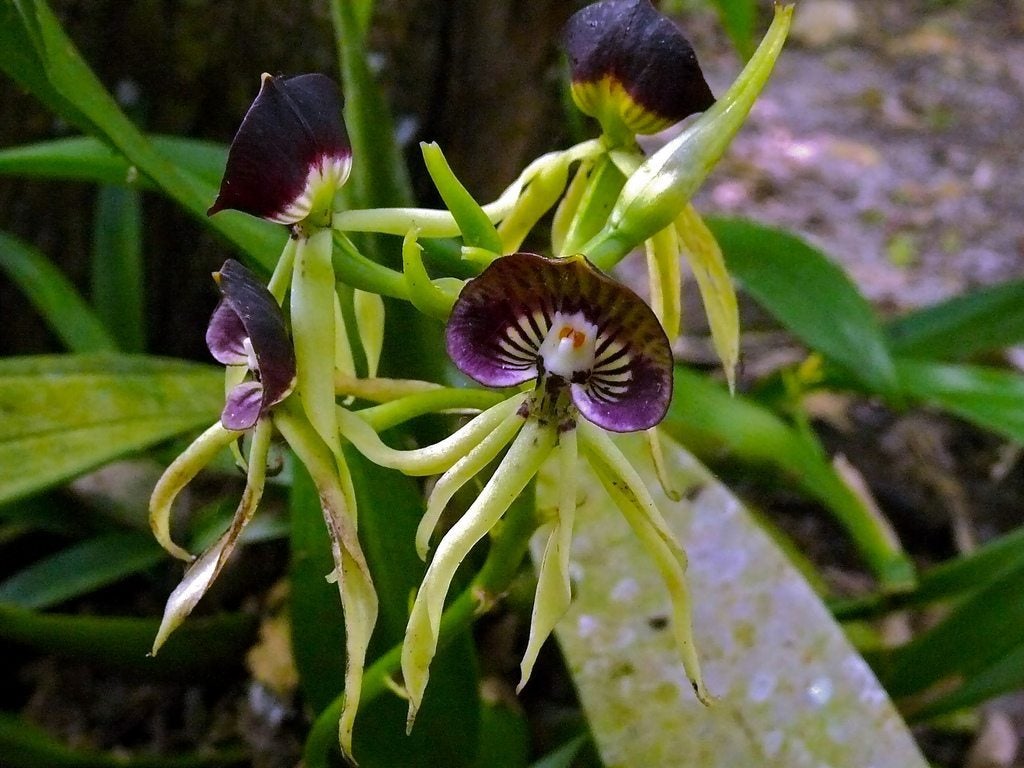Clamshell Orchid Info – What Is A Clamshell Orchid Plant


What is a clamshell orchid? Also known as cockleshell or cochleata orchid, clamshell orchid (Prosthechea cochleata syn. Encyclia cochleata) is an unusual orchid with fragrant, clam-shaped flowers, interesting color and markings, and yellowish-green petals that hang down like curly tentacles. Clamshell orchid plants are highly valued, not only because of their unique shape, but because they always seem to be in bloom. Interested in learning how to grow clamshell orchids? Read on for more information.
Clamshell Orchid Information
Clamshell orchid plants are native to the damp forests, woodlands, and swamps of southern Florida, Mexico, the West Indies, and Central and South America. Like many orchids, they are epiphytic plants that grow on tree trunks and branches where they survive by absorbing moisture and nutrients from rain, air, and water. Unfortunately, the plant population in Florida has been decimated by poachers and destruction of habitat. If you want to try your hand at growing clamshell orchid plants, purchase a plant from a reputable dealer.
How to Grow Clamshell Orchids
Growing clamshell orchids successfully means providing the plants with appropriate Cochleata orchid care. Light: Place clamshell orchids in bright, indirect sunlight. One good option is an east-facing window where the plant is exposed to morning sunlight but protected from hot afternoon sun that may scorch the leaves. You can also place the plant under fluorescent bulbs. Temperature: Clamshell orchid plants don’t do well in extremely high temperatures. Ensure room temps are below 85 F. (29 C.), and at least 15 degrees cooler at night. Water: As a general rule, clamshell orchid plants need water about once every week or sometimes a little more often, using tepid water or rainwater. Allow the soil to become almost dry between watering. Reduce moisture during the winter months. Fertilizer: Feed clamshell orchid plants every other week throughout the growing season using a balanced, water-soluble fertilizer with an NPK ratio such as 20-20-20. Feed the plant only when the soil is moist. Withhold fertilizer during the winter. Repotting: Repot the plant when the container becomes too snug. The best time for repotting orchids is soon after new growth appears in spring. Humidity: Clamshell orchid plants prefer a humid environment. Place the pot on a tray of damp pebbles to increase the humidity around the plant. Mist the orchid occasionally when the air is dry.
Sign up for the Gardening Know How newsletter today and receive a free copy of our e-book "How to Grow Delicious Tomatoes".

A Credentialed Garden Writer, Mary H. Dyer was with Gardening Know How in the very beginning, publishing articles as early as 2007.